#Oskar Schindler’s Enamel Factory
Explore tagged Tumblr posts
Text
Top 10 Things to do in Krakow, Poland
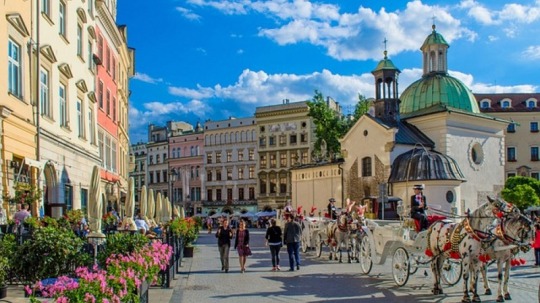
Krakow is one of the most underrated cities in Europe. But as tourists begin to uncover its unique mix of history and contemporary culture, it’s not going to stay that way for long. A Krakow city break has long rivalled Warsaw to be the best city in Poland. But while it might have lost out as capital to Warsaw a few hundred years back, Krakow definitely has the best architecture, and arguably the best food and drink in the country.
Explore the cobbled streets of Krakow’s Old Town, gorge on pierogi dumplings and Polish beers, and delve into its sobering World War II history and modern art and culture.
There are a lot of great things to do here on a trip to Poland. Here are our top 10 favourite things to do in Krakow.
Krakow Old Town
Krakow has a long history dating back well into Europe’s medieval era. Despite the relatively recent destruction of World War II, much of the Old Town is remarkably well preserved.
No visit to Krakow is complete without taking a walk through the Old Town, where you’ll find historic buildings, centuries-old churches and the remains of fortresses and gates.
Recognised as one of Poland’s best UNESCO World Heritage Sites, Krakow Old Town is where you’ll find such iconic sights as St Mary’s Basilica, the Barbican Gate, Wawel Castle and the Main Market Square.
Wawel Castle and Wawel Cathedral
Two of the most important places to visit in Krakow are Wawel Castle and Wawel Cathedral.
Part of Krakow’s historic Old Town, these famous buildings are built atop Wawel Hill, from where they have long dominated the rest of the surrounding city.
Wawel Castle dates back to the 13th century and is a beautiful example of medieval Polish architecture. Wawel Cathedral, found within the Wawel Hill complex, is where the Polish kings and queens were crowned through the ages.
Main Market Square
Also found within the historic walls of the Old Town is Krakow’s Main Market Square, which is easily one of the best places to visit in the city.
The square dates back to at least the 13th century, and it’s been the centre of life in Krakow for hundreds of years.
In fact, this is the square in Europe, and it’s still a lively and beautiful place largest surviving medieval to visit. You can enjoy the endless street performances held in the square, take photographs in front of the spectacular skyline, or simply sit back and enjoy a coffee or a beer while the world passes by.
Cloth Hall
One of the best things to do in Krakow is to explore the world-famous Cloth Hall.
Located in the centre of Main Market Square, the Cloth Hall is one of Krakow’s most iconic buildings. This has long been the centre of commerce in the city, dating back centuries. When Krakow was the capital of Poland until the 16th century, it was the largest trading hub in the country.
Today, you can still find a huge number of market stalls and shops inside Cloth Hall, selling traditional goods, artisanal products and souvenirs. On the top floor, you can find a huge museum dedicated to polish artwork through the ages.
MOCAK
If you’re an art lover then you’ll want to take a trip to MOCAK, Krakow’s excellent museum of modern art.
MOCAK, or the Museum of Modern Art in Krakow, is home to the best contemporary works in Poland, with both permanent and temporary exhibitions to explore.
This is one of Krakow’s newest tourist attractions, but it’s found outside the city centre built on an old segment of a factory that was once run by a certain Oskar Schindler during World War II.
Oskar Schindler Enamel Factory
You can visit the remaining parts of the Oskar Schindler Enamel Factory in Krakow, too.
Oskar Schindler was the true-life subject of the renowned Holocaust Drama, Schindler’s List, and the factory depicted in the film is now a museum.
It offers a fascinating insight into the darker days of Krakow’s history, but also an inspiring look at what one individual did to redeem himself in the face of war.
Kazimierz District
To learn more about Krakow’s Jewish history, take a tour through the city’s Kazimierz District.
Once the bustling hub of Jewish culture, the district lay derelict for decades after World War II, but in recent years has seen a dramatic revitalisation. It’s now a UNESCO World Heritage Site and a wonderful hub for art and modern Polish culture in Krakow.
Auschwitz-Birkenau
Just one hour away from Krakow, you can find one of the most infamous places in European history.
Auschwitz-Birkenau needs no introduction, because this is where the worst of the Holocaust was perpetrated.
It’s now a memorial site, and while it’s not exactly the happiest place to visit on holiday, it’s an incredibly important place that attracts millions of visitors every year. Learn about the history and make sure Krakow’s World War II past isn’t forgotten.
Wieliczka Salt Mine
Another unique day trip to make from Krakow is a tour of the Wieliczka Salt Mine. Dating back to around the 13th century, this was once one of the largest salt producers in the world.
Today, it’s an important historical landmark, where you can learn about Poland’s salty history. It’s also a surprisingly beautiful place, with vast underground caverns and an elaborate network of tunnels and mine shafts that can be explored.
Eat Pierogi
Polish food isn’t quite as international as it perhaps should be. However in Krakow, you’ll soon start to wonder why there aren’t more Polish diners elsewhere in the world.
The country’s staple dish is pierogi, a delicious dumpling that’s stuffed with meat, cheese or vegetables, or in some cases all three.
For the most traditional pierogi, then head to a Polish Milkbar, a type of canteen serving cheap, Polish food that became popular during the Communist era.
Contact Baltic Travel Company today to find out more about our great travel itineraries for Krakow and Poland, and to book your next getaway!
Resource URL: - https://www.baltictravelcompany.com/blog/index.php/poland/top-10-things-to-do-in-krakow-poland/
0 notes
Photo
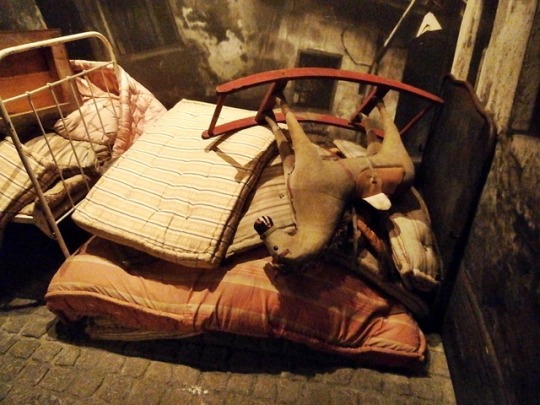



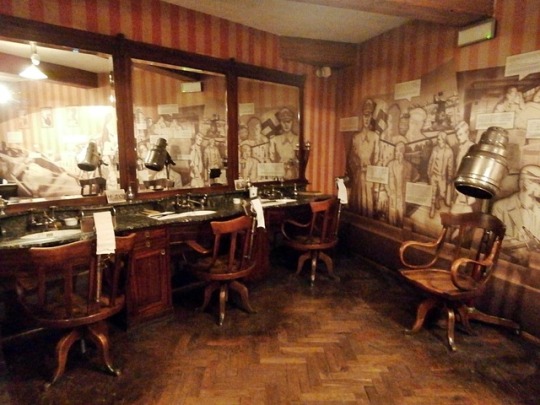

ғᴀʙʀʏᴋᴀ ᴇᴍᴀʟɪᴀ ᴏsᴋᴀʀᴀ sᴄʜɪɴᴅʟᴇʀᴀ, ᴋʀᴀᴋóᴡ, ᴘᴏʟsᴋᴀ
#Poland#Polska#Krakow#Oskar Schindler's Factory#Oskar Schindler's Enamel Factory#Fabryka Emalia Oskara Schindlera#rangerphoto#dark tourism#museum
5 notes
·
View notes
Text
When “all the gates of compassion seemed to have been closed”, what is to be done?

Winner of seven Academy Awards, including Best Picture and Best Director, Schindler’s List is the incredible true story which follows the enigmatic Oskar Schindler (Liam Neeson), who saved the lives of more than 1,100 Jews during the Holocaust.
It is the triumph of one man who made a difference and the drama of those who survived one of the darkest chapters in human history because of what he did. Schindler’s List is a powerful story whose lessons of courage and faith continue to inspire generations.
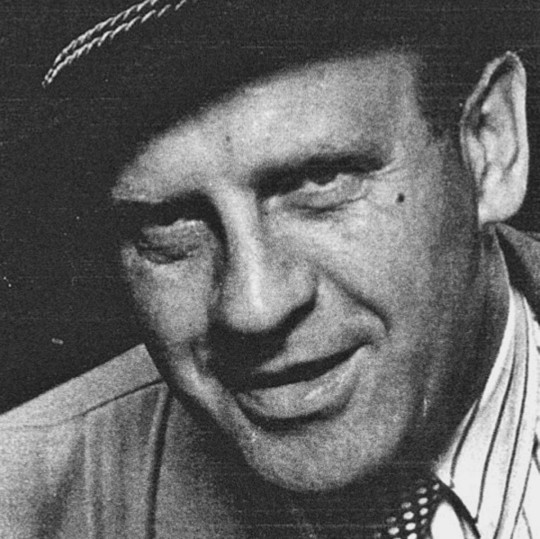
Following the Nazi invasion of Poland, Oskar Schindler, a German Catholic industrialist, moved to Kraków and assumed responsibility for the operation of two formerly Jewish-owned manufacturers of enamel kitchenware. He then established his own enamelworks in Zabłocie, outside Kraków. That factory became a haven for about nine hundred Jewish workers, providing them relief from the brutality of the Płaszów labor camp nearby.
In October 1944 Schindler was granted permission to relocate his defunct enamelworks to Brünnlitz, Czechoslovakia—this time as an armaments factory—and to take with him the Jewish workers from Zabłocie. He succeeded in transferring to Brünnlitz approximately eight hundred Jewish men from the Gross-Rosen camp and three hundred Jewish women from Auschwitz, ensuring their humane treatment and, ultimately, saving their lives.
In 1962, Yad Vashem awarded Schindler the title “Righteous Among the Nations” in recognition of his humanitarian contribution, and in 1993, the United States Holocaust Memorial Council posthumously presented to him the Museum’s Medal of Remembrance. This medal, rarely presented, is intended to honor deserving recipients for extraordinary deeds during the Holocaust and in the cause of Remembrance. Emilie Schindler accepted the medal on behalf of her husband at a ceremony in the Museum’s Hall of Remembrance.
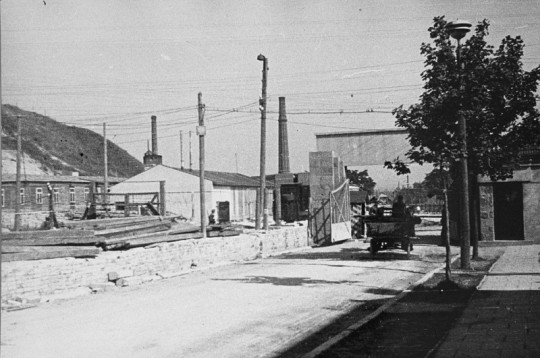
The Płaszów camp was established in 1942 under the authority of the SS and police leaders in Krakow. It was initially a forced-labor camp for Jews. The original site of the camp included two Jewish cemeteries. From time to time the SS enlarged the camp. It reached its maximum size in 1944, the same year that it became a concentration camp. Until that time, most of the camp guards were Ukrainian police auxiliaries chosen from among Soviet soldiers in German prisoner-of-war camps and trained at the Trawniki training camp in Lublin.
The German industrialist Oskar Schindler established an enamelware factory in Krakow, adjacent to Płaszów. He attempted to protect his Jewish workers, some 900 people, from abuse in Płaszów and from deportation to killing centers. When he moved the factory and his Jewish work force to the Sudetenland in 1944, he prevented the deportation of more than 1,000 Jews.

It soon became clear that her marriage would have both its passions and its betrayals. Yet Emilie stayed with Oskar through his growing involvement with the Nazis, working for counterintelligence with him. She first, then he later, came to realize the costs of the Nazi takeover and became witnesses to its terrors.
Through their work together at their two factories, saving the Jews became paramount for the Schindlers. Emilie nursed the Jewish factory workers when they fell ill, often saving their lives. She risked imprisonment or worse for her activities in the black market to feed them.
Where Light and Shadow Meet chronicles the Schindlers' flight after the war, the loss of almost all their possessions, and their eventual emigration to Argentina. There they settled on a farm, but barely scraped together an existence. Oskar returned to Germany, leaving Emilie to manage on her own. This is the story of one woman's daily acts of bravery during Hitler's reign and why it mattered.
#schindlers list#Holocaust Memorial Day#United States Holocaust Memorial Museum#hmd2023#manchester#education#oskar schindler#emilie schindler#ww2 history#uk#ww2 education#argentina#yad vashem#social media#books#book club#bookshops#germany#europe#media#film#BBC News#bbc iplayer
12 notes
·
View notes
Photo

Fabryka Emalia Oskara Schindlera – obecnie Muzeum Historyczne Miasta Krakowa 元シンドラーの琺瑯工場(現在はクラクフ市歴史博物館)の入口脇に並ぶユダヤ人たちの顔写真。
#poland#cracow#Oskar Schindler's Enamel Factory#photographic portrait#polska#krakow#kraków#fabryka emalia oskara schindlera#fabryka schindlera#photography#fotografia#zabłocie#lipowa
3 notes
·
View notes
Note
Hiii Justine! I'm off to Poland (krakow and Warsaw) in two weeks on holiday. Any insider tips of things I must see, eat or do? (also, please don't be judgemental, we'll be traveling by car and bringing loads of disposable face masks and abiding by the Polish rules and regulations) ✌🏼
wow so i typed for 10 min and then accidentally closed my browser so i had to type it again so sorry this took so long aergfaeswrg
and trust me im soooo far from judging you so no worries.! First you need to know that Krakow is amazing, beautiful and historic and Warsaw is a hole
So in Krakow. You def need to go to main square. Like its always the first place tourist visit and now wonder because its beautiful. And you have lots of stuff there. Practically every brick there is historic hahaha. But for touristy stuff i think my fav there has to be an underground museum. Its really impressive.
Next of course Wawel Castle and our dragon and dragons den. I think its the coolest place in the city actually. Like cmooon not many cities have castles hahah and theres so many museums and stuff to see there so you can just go and pick what you like or you dont have to go really inside and just walk around there because its still amazing.
Then theres a whole Kazimierz district. VERY BEAUTIFUL. and very historic. Also it has lots of charming places to sit and eat.
Then theres Oskar Schindler's Enamel Factory. I know its like THE museum to go here and all tourists always want to see it. And im not blaming them because it is impressive. And next to it you can find my fav museum in the city Mocak, its a museum of contemporary art.
Ohh and you def have to go for a walk to a park thats around main square called Planty because soooooo pretty. Just buy yourself some ice cream and walk around.
Oh and next to Krakow theres a town called Wieliczka and you can find a Salt Mine there and its like a whole thing too... You go underground and there are like amazing things to see there, you hear lots of stories and legends and its all just magical
Oh and not that far from the city you can find Auschwitz. Not gonna lie its not a fun, light experience but oh so worth to see.
Now food and stuff.
So it of course depends on what you want to eat but you def need to try pierogies. There are like 100380340 places around main square and kazimierz district that serve them and all of them are good. They have to be to stay in business.
If you want amazing pizza, theres a pizza place called ‘Cyklop’, its around main square also and its a famous place because they really do have the best pizza/
Ohhh you can also visting this place called ‘Dolne Mlyny’. Its like this whole complex with bars and restaurants and theres so many good stuff there
and if you want something interesting theres a place called ‘alcatraz’ and its a bar/restaurant thats made like a prison hahaha
ohhh and one of the best places to eat here is also place called ‘Kompania Kuflowa’ its near Wawel Castle.
and if you want bars well...theres so many bars everywhere and all of them are good hahah
sorry that was long. but i hope a little helpfull hahah have fun!
6 notes
·
View notes
Photo

Downstairs
Stairs in Oskar Schindler's Enamel Factory Museum in Cracow, Poland.
#museum#Podgórze#Kraków#Cracow#stairs#Lesser Poland#Małopolska#Poland#inside#black and white#b&w#bw#monochrome
16 notes
·
View notes
Text
7.07.22
LOST ALL HIS MIRTH
Arrived at Krakow Glowny by bus and slept at the laundrette nearby for a few hours. Let my guard down and joined a pub crawl which travelled to four different venues but I only remember the first. Krakow is cold and grey which made sleeping much easier and also suited the sights I visited. I went and saw the Elvis movie in a quaint cinema with a lovely courtyard where I had a Riesling after the death of the King. Afterwards I met up with a dutchman named Kees and we went to a craft beer bar and had some czech lagers. He was on holiday because he has just gone through a horrible breakup and wanted to get out and clear his mind. He was great company for a night but did he also mentioned he blames women as a gender for his broken heart and wasn’t open to changing this opinion despite my pleas. He was staying in my dorm and said he wanted to come along with me the following day where I had planned to see some museums and go to a gig. We got breakfast late in the day and he was so despondent he barely ate anything and just kind of moped at the other end of the table while I awkwardly tried to table topics of jovial nature unsuccessfully. We went back to the accom and i luckily had to live rooms as my bed was already taken by someone else when I extended my stay. Asking what I was doing now in the hall way I told him I was going to my room being leaving surreptitiously, peering around corners before running out the stairway. I wish that lugubrious Dutchman all the best.

I had plans to walk across town over the Vistula to visit some galleries and when I left my accommodation I was met with pouring rain which I was rather happy about and I was able to borrow a brolly from someone. I went to the Oskar Schindler Enamel Factory which now houses an exhibition named Krakow Under Nazi Rule and the Museum of Contemporary Art which had some artworks I liked including this one of two guys sitting on an couch mimicking each other. I went to an ex factory turn squat that was not far from Schindler’s factory to watch a speed/thrash/black metal gig. Most of the bands were local but a German band also played who were good but a little too 80s thrash revisionist. The band i was most keen to see, Throät Cütter, had pulled out late so I left a little early. On the walk home I came across a public performance at Rynek Główny, the market square, and sat and watched as a 9 piece band played folk style music with a grainy 8mm vision playing on a screen behind of people in long coats walking through a forrest. Some of the band members held suitcases with fairy lights on them and some of them had what looked like dolls in them but I couldn’t tell. All the audience gathered around were holding and waving mini polish flags and I held one too but when it finished I was too tired to talk to anyone about what it was so I left and walked to my room totally ignorant of what the occasion but charmed nonetheless.



0 notes
Text
Day 12- Krakow: In Which I Visit Bitch City
dI awoke surprisingly well rested for having slept in a hostel dorm. If there's one thing Krakow does better than Warsaw, other than everything, it's have hostels with comfy beds that don't feel like they're going to cause my death during the night. My ridiculously quiet and conscientious room mates had also been a rather pleasant surprise. It was a joy, as it always is to realise that, bar one forty five second bout of incredibly loud snoring from a Malaysian man, I was the loud one in the dorm.
I catapulted my body down my bunk's ladder, shattering both knees and stomping a hole in the floor in the process and wandered through to the hostel's kitchen for the free breakfast they had offered. This breakfast turned out to just be some toast and a bit of cheese, but I'm not fussy. I'll eat toast and cheese for free. Hell, I'll eat from a bin, for free.
I endured the awkwardness of the communal breakfast as best I could (i.e. poorly) and bolted back to the comfort and solitude of my room as fast as humanly possible, to plan my day.
There was nothing in particular that I really felt like I absolutely had to do in Krakow and additionally, I had, now, only a single day to experience the city, which did rather make this planning process tricker than it needed to be. I decided in the end to have a quick walk around the Christmas markets before venturing further afield.
The market here was pretty excellent and boasted some truly top notch tat as well as very delicious smelling bits of animal. I spent some time bibbling around, weaving through crowds as best I could (i.e. poorly) and buying souvenirs, but before long had grown tired of being around so many people, so utterly unable to comprehend the space that their bodies took up and left to wander the rest of old town.
Krakow is a very nice city; every bit as lovely as I remembered it being on my last visit, ten years prior- if perhaps a little more modern and homogenised, now- but there honestly isn't all that much to say about my tour of it. I went around old town, which was lovely, though full to bursting with tourists, past the castle, also lovely but full of tourists

If you squint, you can see them.
Through to the Jewish quarter to see the funny jews with the long hair, less touristy but also substantially less interesting. Apparently if you get there at 3pm sharp though, you can see their keepers feeding them bagels and matzah balls, though. (...if this is for some reason, the first entry you have chosen to read of this blog, I would suggest you scroll back by one to make the previous few lines seem far, far less hateful.)
I had been recommended a restaurant by the hostel staff in the Jewish quarter, though, when I got there, discovered that it was just a bar and so, instead, I bought a sausage from a stand and ate it in the cold. It wasn't nearly as terrible as it sounds.
I pressed on across the river to reach the last of my planned attractions for the day; Oskar Schindler's enamel factory, though, I don't think I really got the full effect of the place, to be totally honest. It was swarming with tourists, with lines for entrance so long that it didn't even cross my mind to wait in them and the building appeared to have been substantially modernized (though I may be mistaken about that), so in essence it was really just kind of like...walking past quite a busy factory. I haven't even seen the film, so I couldn't even recognise parts of it from that.

Hey, look, it’s probably that bit from that film or whatever...
All in all I give it a 3/10. Try harder, Oskar. It's not that difficult...
I trudged back to old town, my pedometer reading in excess of 20,000 steps (as before, the lack of quality in this entry was not through lack of trying...) and stopped off at a ridiculously cheap 24 hour pierogi restaurant, where I had some genuinely fantastic pork and cabbage dumplings. I had the time of my life, though I am well aware of exactly how well enjoying a very basic meal translates to text (i.e. poorly) so I shan't dwell on it. They were great, though.
After my very excellent pierogi (which where honestly just top notch), I returned to my hostel having failed to have the patience to breech the solid wall of people that now populated the Christmas market. Once settled back into my bed, the Malaysian man (Ing? I think his name was? Ng? Something like that) struck up a conversation. He continued telling me facts about things I had barely even a passing interest in; how many Scottish people there are in Malaysia, how Dutch people are good with money, how boring Australia is. Soon, though we were joined by a new addition to the room, an Italian man with an exceptionally shiny head, and the conversation turned slightly more seedy.
I mentioned that I had just been in the Ukraine. Ing was apparently a fan. He went on to tell me about Odessa, which he visited in the summer.
“Oh, yeah. You would not believe the girls there!” he said, middle aged and awkward.
“mm.” I nodded in faux interest, not particularly enamoured with the idea of imagining how attractive eastern European women are through the filter of a pervy old asian dude.
“They wear almost nothing at all!” he continued, edging closer and closer to full stereotype. “It's bitch city, man.”
“Mm” I nodded agai- wait a second. “Bitch city?!” I laughed, half out of shock, half out of awkwardness and an additional half because “bitch city” is just a genuinely funny phrase.
“yeah!” he nodded enthusiastically, adding an quick “I'm not kidding!”
I didn't quite know what to do with this turn of events other than say “wow...”, which Ing immediately mistook for enthusiasm.
The Italian man piped up “I've never heard this phrase before, Bitch City”. He was also laughing.
“You no hear it?” Ing said, incredulous. “It just means city next to ocean”
“ohhhh!” myself and the Italian man echoed in unison “beach city!”
Ing nodded, laughing as he finally came to understand what had transpired. Boy, let me tell you, I was sure glad that he didn't say 'Bitch City', as up until that point, I had actually quite liked In-
“But you might as well call it Bitch City, anyway to be honest! So many girls and they wear so little!”
...Ah, there it is. I chuckled once more out of awkwardness and quickly excused myself to go and make dinner.
“make dinner” may be a bit of a grandiose term for what I actually did, which was sit in the hostel's kitchen for an hour and a half, waiting for a string of other people to finish cooking, before finally giving up entirely, having had quite enough of the truly vapid conversation that two American girls sitting across from me at the kitchen table with me were having and heading to bed, hungry, angry and early in order to be up in decent time for the journey to the next leg of my trip, tomorrow: Brno.
#travelling#vagrant#krakow#poland#castle#old town#christmas#christmas markets#jewish quarter#schindler#oskar schindler#factory#schindler's list#bitch city
1 note
·
View note
Photo

Siempre me ha entristecido leer, ver o escuchar historias de este periodo histórico. Atravesar ese pasillo con las banderas nazis fue difícil; caminar por el museo, doloroso. La piel se te pone chinita solo de pensar lo mucho que un pueblo entero sufrió por las ideologías equivocadas de algunos. Aprendamos de nuestro pasado y no permitamos que vuelva a pasar algo similar . . . #schindler #museum #nomore #nomoretears #notoracism #nowar #sad #painful #history #yestopeace #peace and #tolerance (en Oskar Schindler's Enamel Factory At 4 Lipowa Street)
#nomore#schindler#peace#nomoretears#tolerance#sad#nowar#museum#yestopeace#painful#notoracism#history
1 note
·
View note
Photo

Oskar Schindler's Enamel Factory At 4 Lipowa Street
(via #igerspoland #igerskrakow #sunsetporn - vaffelhjarte_)
7 notes
·
View notes
Photo









ғᴀʙʀʏᴋᴀ ᴇᴍᴀʟɪᴀ ᴏsᴋᴀʀᴀ sᴄʜɪɴᴅʟᴇʀᴀ, ᴋʀᴀᴋóᴡ, ᴘᴏʟsᴋᴀ
#Poland#Polska#Krakow#Oskar Schindler's Enamel Factory#Oskar Schindler's Factory#fabryka emalia oskara schindlera#Europe#Museum#rangerphoto#dark tourism
4 notes
·
View notes
Photo


October 9, 1974- a Hero goes home
German businessman Oskar Schindler, credited with saving 1,200 Jews from the Holocaust, dies at the age of 66.
A member of the Nazi Party, he ran an enamel-works factory in Krakow during the German occupation of Poland, employing workers from the nearby Jewish ghetto. When the ghetto was liquidated, he persuaded Nazi officials to allow the transfer of his workers to the Plaszow labor camp, thus saving them from deportation to the death camps. In 1944, all Jews at Plaszow were sent to Auschwitz, but Schindler, at great risk to himself, bribed officials into allowing him to keep his workers and set up a factory in a safer location in occupied Czechoslovakia. By the war’s end, he was penniless, but he had saved 1,200 Jews.
In 1962, he was declared a Righteous Gentile by Yad Vashem, Israel’s official agency for remembering the Holocaust. According to his wishes, he was buried in Israel at the Catholic cemetery on Mount Zion.
2 notes
·
View notes
Photo

Krakow 🇵🇱 -Auschwitz-Birkenau Concentration Camp -Old Jewish town / Ghetto -Walwel Castle and Cathedral -Oskar Schindlers Enamel Factory (at Kraków, Poland) https://www.instagram.com/p/B2TldhiipCvpialdcBUnRwd8XM0rAuZV8K7FbE0/?igshid=1bv01m2v8z98u
0 notes
Photo
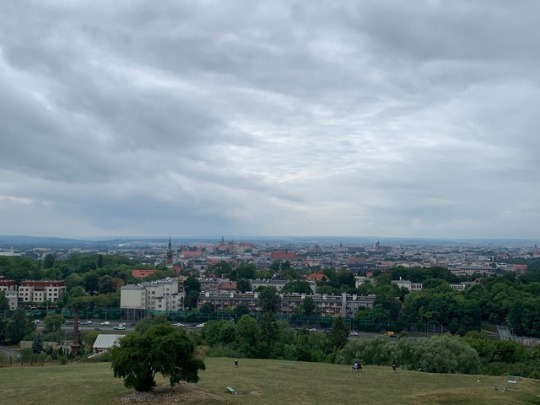
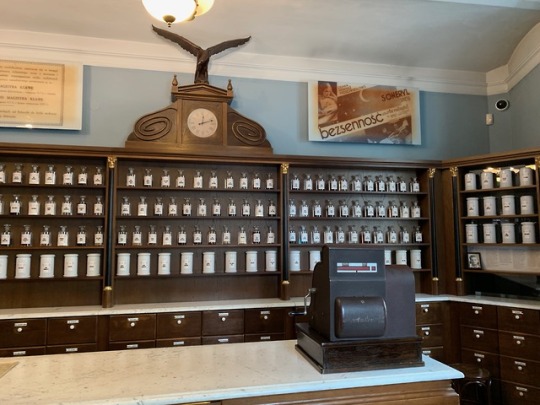



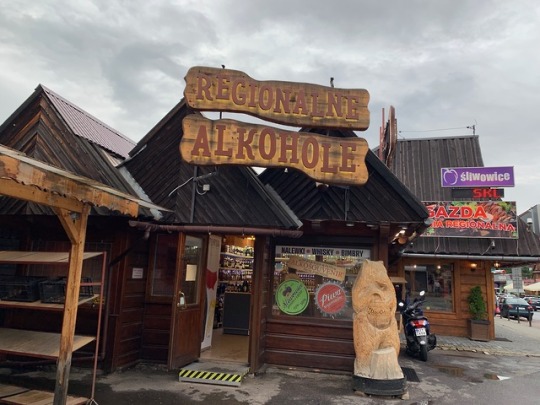




July 20-25, 2019
At this point, I’m a little burnt out on traveling so I miss my train to Kraków, Poland ($48.97, no refund) and take a 9-hour bus ride as penance (€32.53). Should have researched flights more, as it’s only zł39 ride from the airport to/from town.
And, even though Poland takes up days on my Schengen visa, it doesn’t use the Euro (like I’ve been used to), and the currency is instead the Polish złoty. A friend along my travels recommended the Greg & Tom Hostel (zł65/night) for the meals alone, and yes, they were really good. Another good recommendation is Atlantis, for half the price, but none of the meals.
It was a quick, cheap trip, but here are some things I recommend:
I walked through Planty Park at least a dozen times. Great walk, and also, as the royal capital of Poland until 1596, Kraków is packed with attractive historic buildings and streetscapes.
Check out the stunning Wawel Castle and Cathedral. Just walking up to and around the area is nice, in my opinion.
Walk Bernatka footbridge to get to Old Town. Lots of fun restaurants, bars, and cafes in the area too.
Just outside the Old Town lies Kazimierz, the former Jewish quarter, its silent synagogues reflecting the tragedy of the recent past. The district’s tiny streets and low-rise architecture make it an interesting place to explore.
If you want to visit Oskar Schindler’s Enamel Factory, keep in mind that the museum is less about the factory and more about the history of Poland and the town. To avoid all lines, you should buy the memorial trail ticket (zł32) at Muzeum Apteka Pod Orlem to have entrance to three places total for seven days.
I booked a tour with Cracow City Tours for a morning trip and guide to Auschwitz (zł119). Personally, I found the guide really beneficial and the experience moving.
I enjoyed eating the street food oscypek, pączki, obwarzanek, and zapiekanki. Oh, eat sausages and pierogies. Be sure to have some beers too!
The Kraków Pinball Museum is less of a museum and more of an arcade with unlimited play for €10/day. It has pinball machines from many decades.
Make a 1-3 day trip to Zakopane by bus (zł20) to visit Tatra National Park and go up Kasprowy Wierch (hike or cable car). The water park is apparently one of the best.
Kopiec Krakusa is a mound in the middle of a grassy park, further south, that has a very nice scenic outlook. Its highest point is 16 meters tall and offers panoramic views of the city.
Museum of Contemporary Art (MOCAK)
Check out the university, Collegium Maius, where Nicolaus Copernicus went.
Pomnik Elvisa Presleya is statue remembering the late Elvis Presley. This statue is at the edge of the park. See it on your way to Zakrzówek Lake. It’s an old quarry filled with perfect blue water, but I don’t think they allow people to swim in it anymore because it’s a bit dangerous if you’re not a good swimmer.
1 note
·
View note
Photo

"Life makes sense as long as you save people." - Oskar Schindler | Oskar Schindler's Enamel Factory, Zablocie, Krakow @muzeumkrakowa One of the best museums in the world I've ever been to. Usually there are a few museums that are especially memorable to me and this is one of them. From the visuals and sounds to the environment that was created, it was a very immersive and enlightening experience of what happened to Poland and its people during the German occupation, including life in the Ghetto. There was so much to read and absorb. I commend the museum curator for bringing to life some very dark and intense moments in history. (at Fabryka Schindlera oddział Muzeum Historycznego Miasta Krakowa) https://www.instagram.com/p/Bs76q3RHhwN/?utm_source=ig_tumblr_share&igshid=1993q24bbahpk
0 notes
